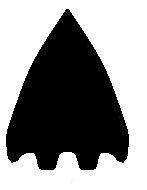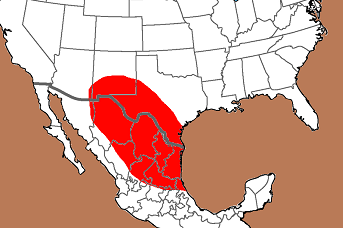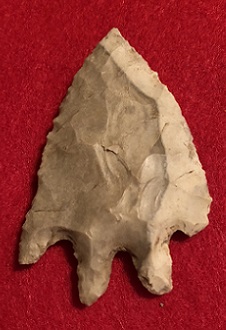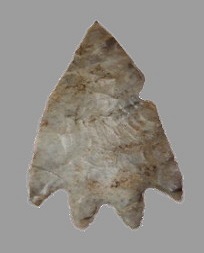Outline is Representative of Size and Shape:

Name Details:
Identified By: Richard MacNeish
Named For: Point attributes
Date Identified: 1958
Type Site: Pueblo Site, Sierra De Tamaulipas, Mexico
Identified By: Richard MacNeish
Named For: Point attributes
Date Identified: 1958
Type Site: Pueblo Site, Sierra De Tamaulipas, Mexico
Point Validity:
Valid type
MacNeish was a renowned anthropologist who identified this point during his work at Sierra De Tamaulipas Mexico. This type was named in a professional publication, but has limited professional references. Perino, 1991 discusses this type, but most other references are collector sources This type is considered a valid type due to some professional references, but may be better considered a collectors type.
MacNeish was a renowned anthropologist who identified this point during his work at Sierra De Tamaulipas Mexico. This type was named in a professional publication, but has limited professional references. Perino, 1991 discusses this type, but most other references are collector sources This type is considered a valid type due to some professional references, but may be better considered a collectors type.
Basal Double Tang
Cluster: Description of Physical Characteristics and Flaking Pattern:
This is a broad medium triangular stemmed point with an elliptical cross section. The blade is primarily excurvate when new and may vary to having an incurvate blade with heavy re-sharpening. The shoulders are barbed with a straight stem. The base has a deep center basal notch that extends the length of the stem, giving the appearance of two smaller stems. This point has a random flaking pattern.
Size Measurements:
Total Length - 25 to 55 mm, Stem Length - 5 to 8 mm, Blade Width - 28 to 50 mm, Stem Width at Shoulders - 23 to 25 mm (***based on small sample size***)
Total Length - 25 to 55 mm, Stem Length - 5 to 8 mm, Blade Width - 28 to 50 mm, Stem Width at Shoulders - 23 to 25 mm (***based on small sample size***)
Commonly Utilized Material:
Additional Comments:
Distribution:

Distribution Comments:
This point is primarily found in Zacatecas, Mexico and into western Texas and southern New Mexico with decreased frequency.
This point is primarily found in Zacatecas, Mexico and into western Texas and southern New Mexico with decreased frequency.
Age / Periods:
Date: 3,500 - 2,000 B.P.
Cultural Period:Transitional Archaic
Glacial Period: Neoglacial to Roman Warm
Culture:
Date: 3,500 - 2,000 B.P.
Cultural Period:Transitional Archaic
Glacial Period: Neoglacial to Roman Warm
Culture:
Age Details:
Similar Points:
Bell
Bell
Other points in this cluster / Related / Associated Points:
Dolores
Dolores


